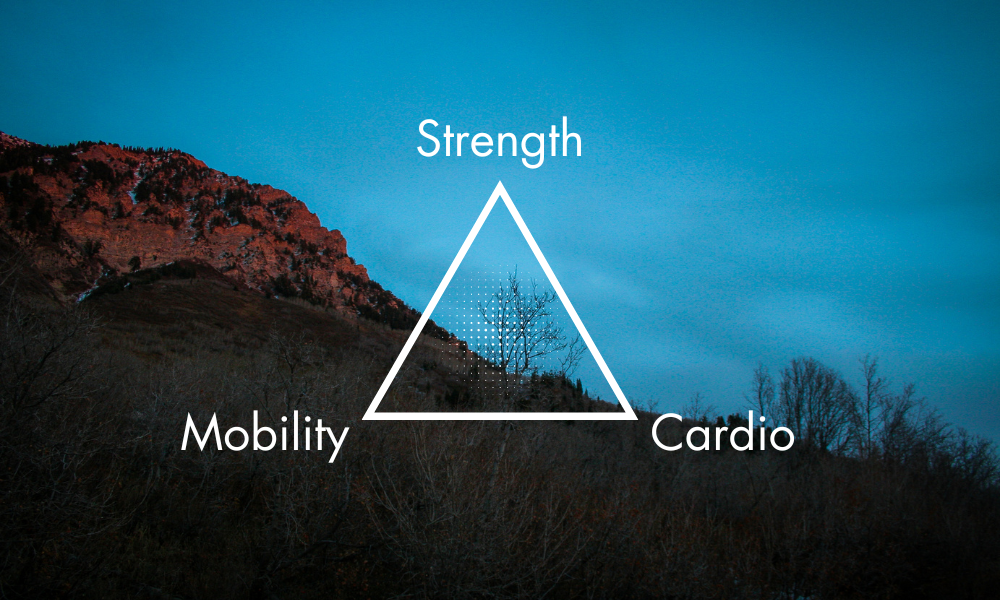If you’re reading this, chances are you’re counting down the days until ski season kicks off—just like I am. Whether you’re gearing up for backcountry adventures, carving out weekends on the slopes, or chasing 100+ days of pure powder bliss, this guide is designed with you in mind. My goal is to share the optimal training mindset to help you prepare your body for the demands of skiing so you can make the most of every run this season. Let’s get started!

Skiing demands a lot from your body, so preparing for the season means dialing in three key areas: strength, mobility, and cardio. These three work together like a triangle, and throughout the year, I aim to stay balanced in the center, adjusting my focus based on specific goals. Living in Tahoe helps me stay naturally active with skiing, backcountry missions, mountain biking, dirt biking, cliff jumping, trail running, and swimming—activities that challenge and build all three sides of that fitness triangle. By strengthening these pillars, you’ll not only enjoy longer, stronger days on the slopes but also reduce your risk of injury.
Strength
Building strength is essential for skiing, and the gym is the perfect place to start. I typically follow a three-day split throughout the year, but as ski season approaches, I shift my focus to leg and accessory muscles. Some of my favorite ski-specific exercises include barbell Bulgarian split squats, Nordic curls, slant board squats to fire up the quads, hip thrusts, calf raises, and jumping rope for dynamic power and stability. These exercises target the muscles you’ll rely on for long, intense runs and help protect against injury on the slopes.
Mobility
Mobility is often overlooked, but it’s key to unlocking your full potential on the mountain. Consider adding a hot vinyasa yoga class to your routine. Not only does yoga enhance mobility and flexibility, but it also combats stagnation—one of the biggest threats to longevity (along with sugar and gravity). A studio like Mountain Lotus in Tahoe City is ideal, especially if you can jump into the lake afterward for a cold plunge. This hot-cold recovery combination reduces inflammation and boosts your overall well-being. If you’re new to yoga, start by assessing your knee and hip mobility. Years of biking or gym work might have left you tighter than you realize—it certainly did for me.
Cardio
Cardio is all about finding what works for you. If you can endure the treadmill or stairmaster, great—but if you’re in Tahoe, why not take advantage of the trails? Invest in quality trail running shoes and get out there. Trail running offers the dual benefit of stunning views and a solid workout. Downhill running is particularly important for building quad strength, while uphill runs target your hamstrings. For years, I thought uphill was enough, but downhill training is just as crucial for skiing performance. If you’re feeling adventurous, take the tram up at Squaw Valley and run down—it’s an exhilarating way to train while immersing yourself in the mountain environment.
A Holistic Approach to Fitness
Learning how to prepare your body for ski season is a journey, but the payoff is immense. Training smarter has not only elevated my happiness but also enabled me to ski over 100 days each season. Listen to your body, set clear goals, and track your progress along the way. I hope this guide helps you feel stronger and more confident on the slopes. Let me know how these tips work for you.








Leave a Reply